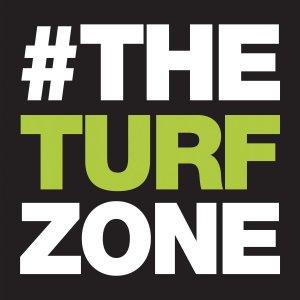The Turf Zone Podcast

Maryland Turfgrass Council – Sun Safety Tips
MTC Turf News – Chris Ball, CSFM
According to the CDC, reducing exposure to UV rays is the best way to keep your skin healthy and to lower your chance of developing skin cancer. That can be difficult for crews who work outdoors, but it can, and should, be done. Here are some ways managers can help keep their crews safe:
- Encourage sun safety among employees and provide sun protection when possible.
- If shaded areas aren’t available at jobsites, provide tents, shelters, and cooling stations for your crews.
- Schedule breaks in the shade and encourage crewmembers to apply sunscreen throughout their shifts.
- Schedule work to minimize sun exposure if possible. For example, scheduling mowing in the early morning instead of at midday and rotating crewmembers in and out of the shade can help reduce their UV exposure.
More tips that everyone working outdoors should consider:
- Wear clothing that covers your arms and legs.
- Wear a wide-brimmed hat to shade your face, head, ears, and neck.
- Wear wrap-around sunglasses designed to block both UVA and UVB rays.
- Use a broad-spectrum sunscreen with a sun protection factor (SPF) of 15 or higher and apply it several times during the day.
For information on early detection, treatment, and resources, visit https://www.skincancer.org/.
Facts About Skin Cancer
According to the Centers for Disease Control and Prevention, skin cancer is the most common form of cancer in the United States. The three most common types are basal and squamous cell carcinomas, and melanoma. To learn more about each, visit the skin cancer page on the CDC’s website (https://www.cdc.gov/cancer/skin/index.htm).
Most cases of skin cancer are caused by overexposure to ultraviolet (UV) rays from the sun, tanning beds, or sunlamps. There are two types of UV rays — UVA (associated with aging) and UVB (associated with sunburn). To learn more about each, visit the UV radiation page on the Skin Cancer Foundation’s website (https://www.skincancer.org/risk-factors/uv-radiation/). People who work outdoors are especially at risk of overexposure, regardless of their other risk factors.
Many of us tend to think about sun safety when it’s hot and sunny, but that’s a mistake that can cost your skin. Per the CDC, UV rays are present on cool, cloudy days, and they can reflect off surfaces such as water, cement, sand, and snow so sun safety should be practiced daily regardless of weather.
In the continental United States, UV rays are strongest between 9 a.m. and 3 p.m. standard time and between 10 a.m. and 4 p.m. daylight saving time. When the UV index is 3 or higher, the CDC advises protecting your skin from too much exposure to the sun. To determine the UV index in your local area, visit the U.S. Environmental Protection Agency’s UV Index Search page (https://www.epa.gov/enviro/uv-index-search). Enter your ZIP code or city and state to calculate the intensity of UV rays where you are with one click.
Chris Ball, CSFM, is sports field account manager at Ewing Irrigation & Landscape Supply near Raleigh, NC. Connect with Chris at bball@ewingirrigation.com.
Excerpted from SportsField Management May 2022.
The post Maryland Turfgrass Council – Sun Safety Tips appeared first on The Turf Zone.






 Visit Podcast Website
Visit Podcast Website RSS Podcast Feed
RSS Podcast Feed Subscribe
Subscribe
 Add to MyCast
Add to MyCast